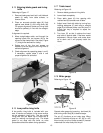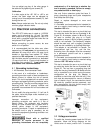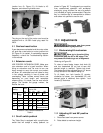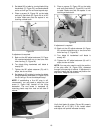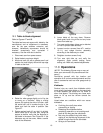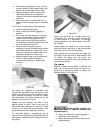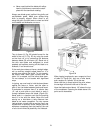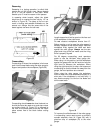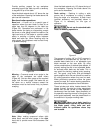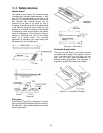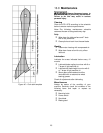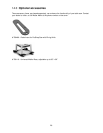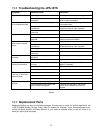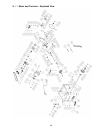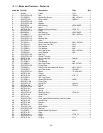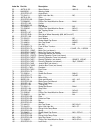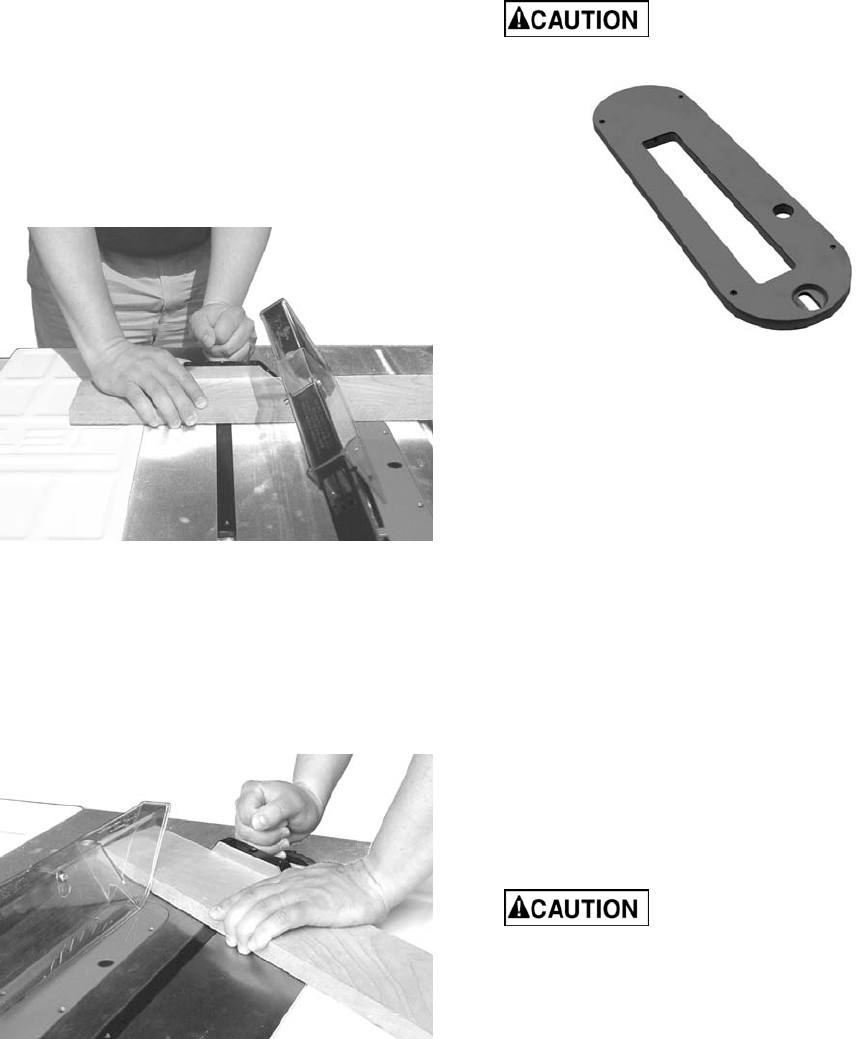
23
Provide auxiliary support for any workpiece
extending beyond the table top with a tendency
to sag and lift up off the table.
Have the blade extend about 1/8" above the top
of the workpiece. Exposing the blade above this
point can be hazardous.
Bevel and miter operations
Bevel cut – A bevel cut is a special type of
operation where the saw blade is tilted at an
angle less than 90 degrees to the table top
(Figure 39). Operations are performed in the
same manner as ripping or crosscutting, except
the fence or miter gauge should be used on the
right-hand side of the blade to provide added
safety in avoiding a binding action between
blade and table top. When beveling with the
miter gauge, the workpiece must be held firmly
to prevent creeping.
Figure 39
Mitering – Crosscuts made at an angle to the
edge of the workpiece are called miters
(Figure 40). Set the miter gauge at the required
angle, lock the miter gauge, and make the cut
the same as a normal crosscut except the
workpiece must be held extra firmly to prevent
creeping.
Figure 40
Note: When making compound miters (with
blade tilted) use the miter gauge in the right
hand slot to provide more hand clearance and
safety.
Have the blade extend only 1/8" above the top of
the workpiece. Exposing the blade above this
point can be hazardous.
Dado cutting – Dadoing is cutting a wide
groove into a workpiece or cutting a rabbet
along the edge of a workpiece. A dado insert
(optional accessory, not provided) shown in
Figure 41, is necessary for this type of
operation.
Do not use the standard table
insert for dadoing operations.
Figure 41
The process of cutting 1/8" to 13/16" grooves in
workpieces is accomplished by the use of a
stacked dado blade set or an adjustable type
blade mounted on the saw arbor. By using
various combinations of stacked dado blades, or
properly setting the dial on an adjustable blade,
an accurate width dado can be made. This is
very useful for shelving, making joints, tenoning,
etc. The guard, riving knife, and anti-kickback
pawls supplied with the saw should be used for
all cutting operations where they can be used.
When performing operations where the guard
cannot be used, as in some dadoing operations,
alternative safety precautions should be taken.
These include push sticks, feather boards, filler
pieces, fixtures, jigs and any other appropriate
device that can be utilized to keep operators’
hands away from the blade. Upon completion of
the operation requiring removal of the guard, the
entire guard assembly must be placed back on
the machine in its proper working order.
Never use a dado head in a
tilted position. Never operate the saw without
the blade guard, riving knife and anti-
kickback pawls for operations where they
can be used.



